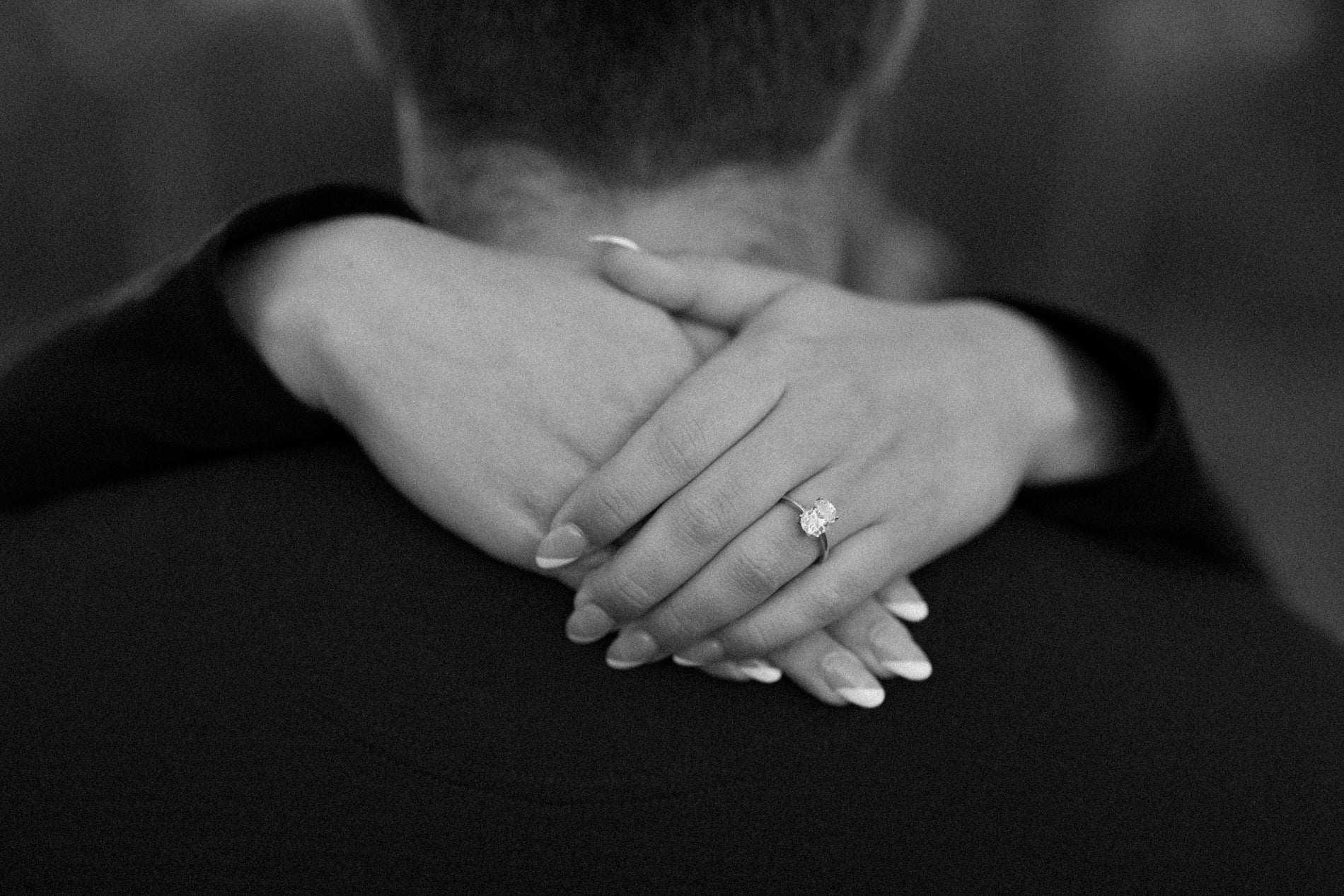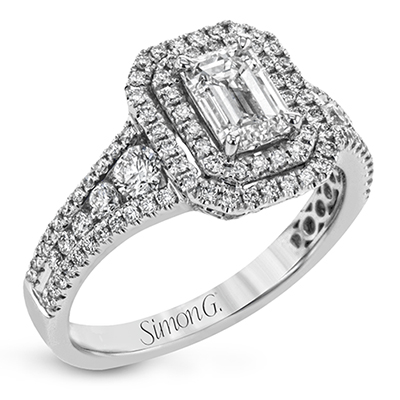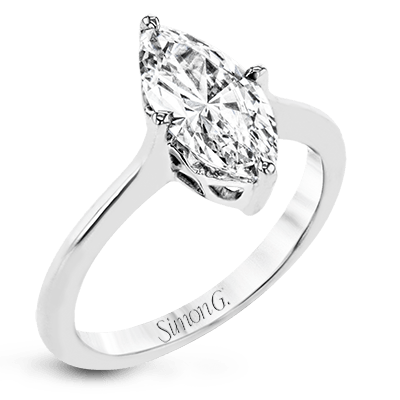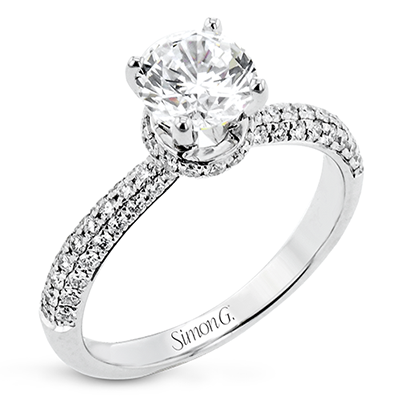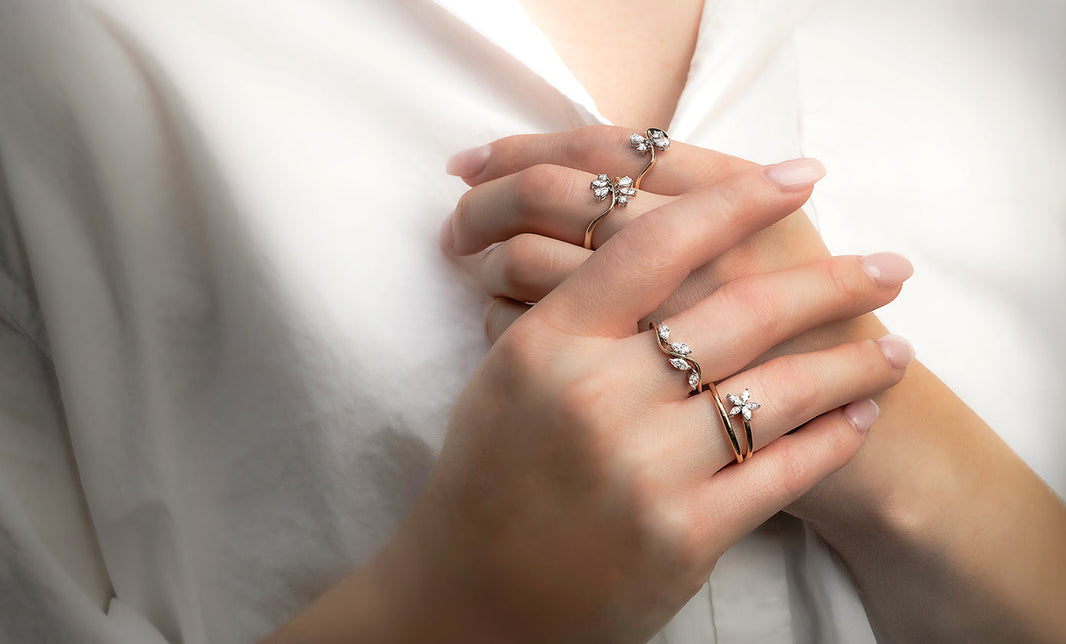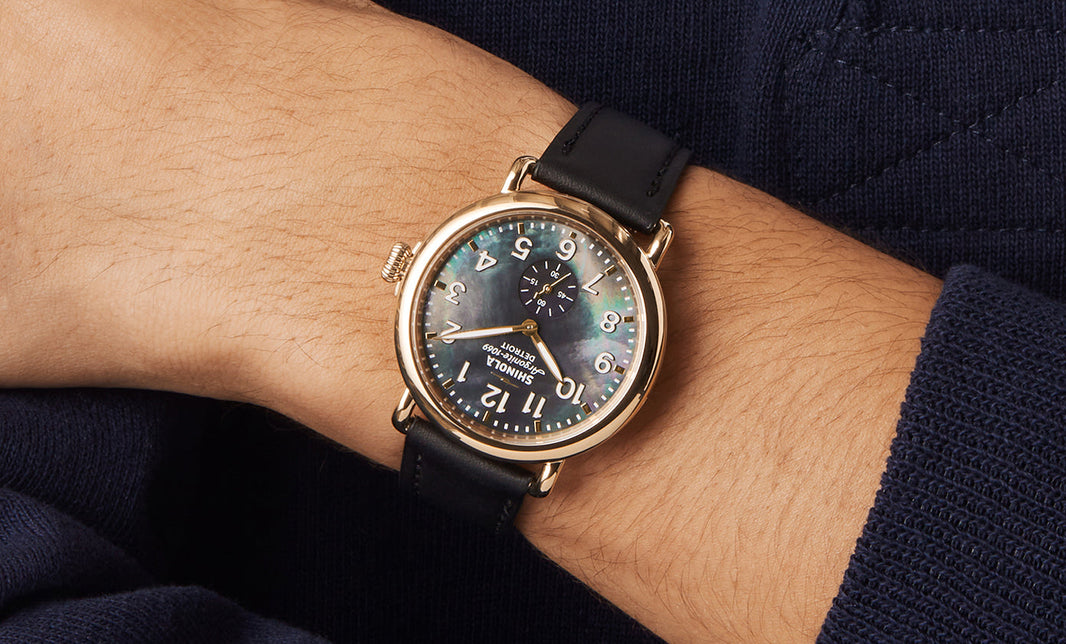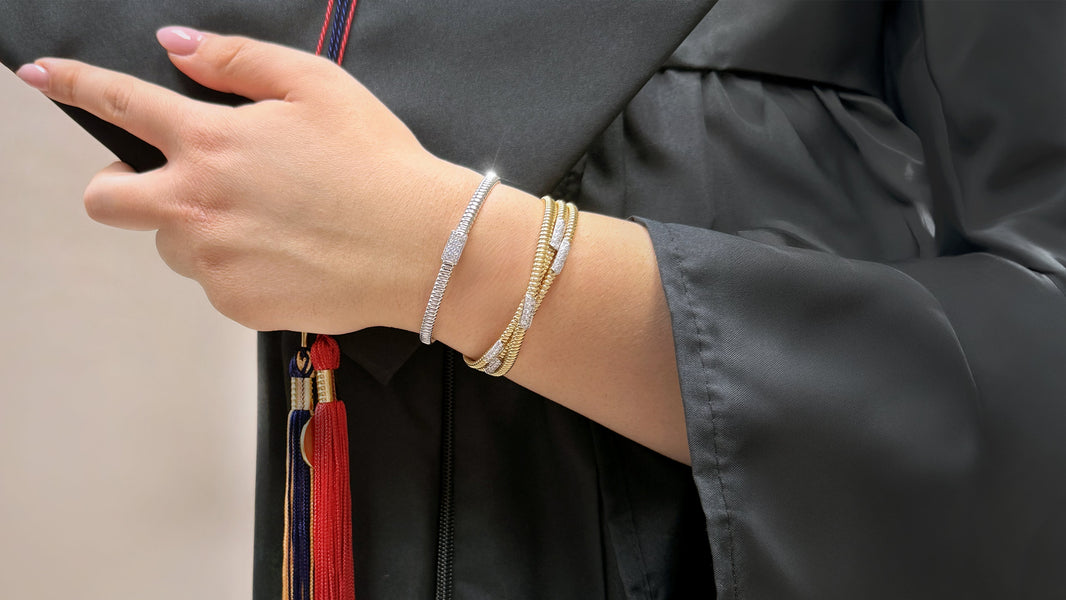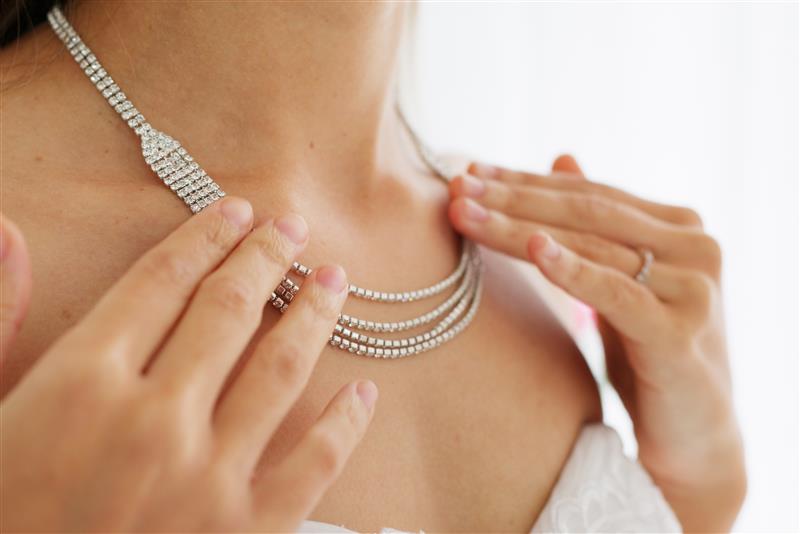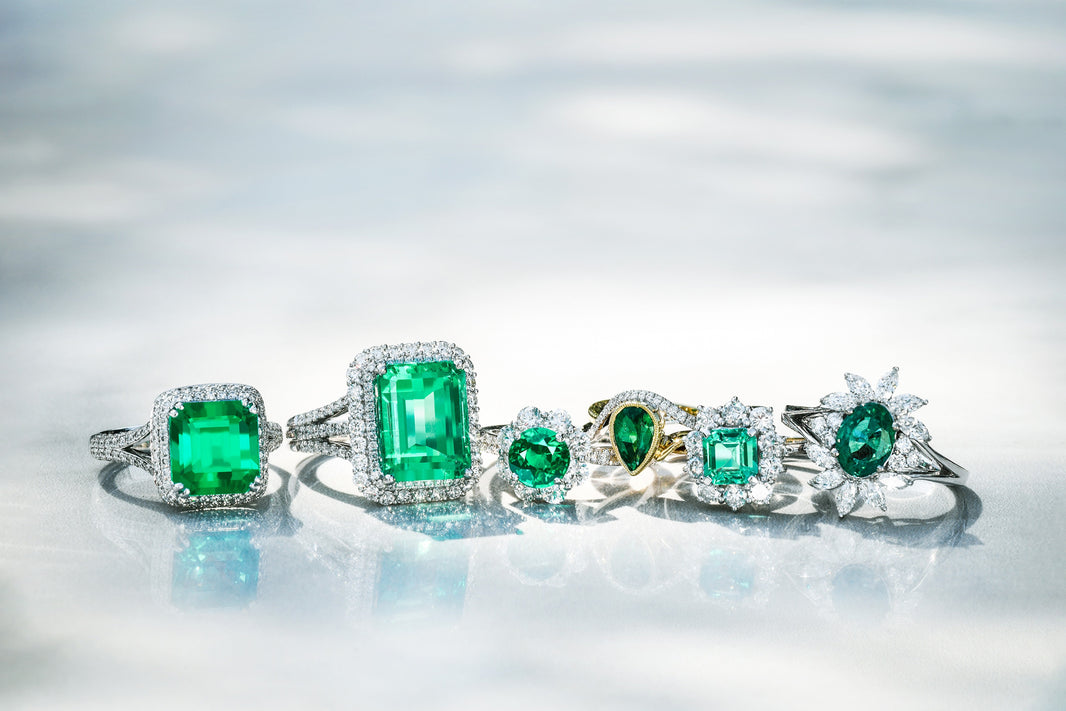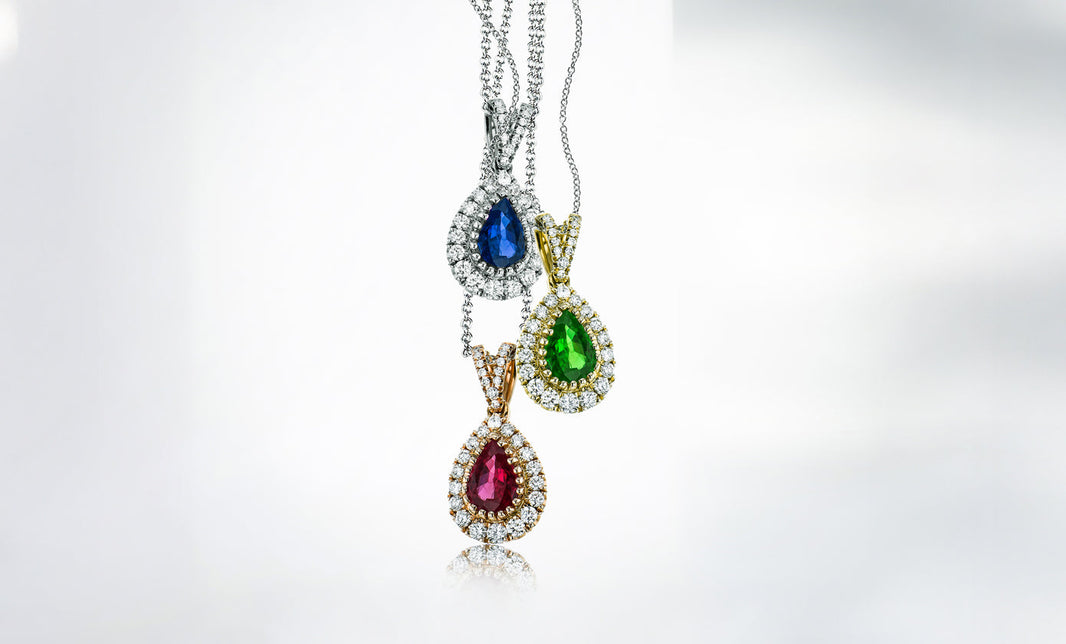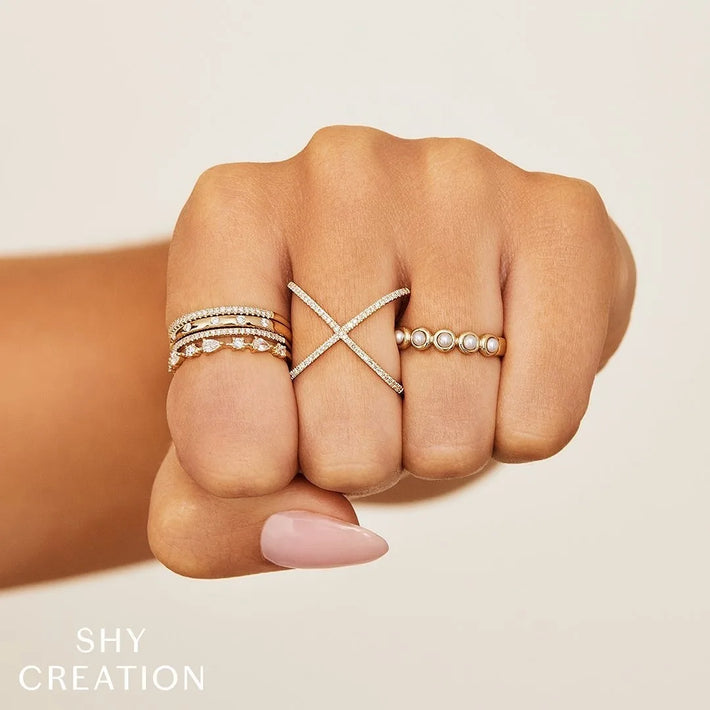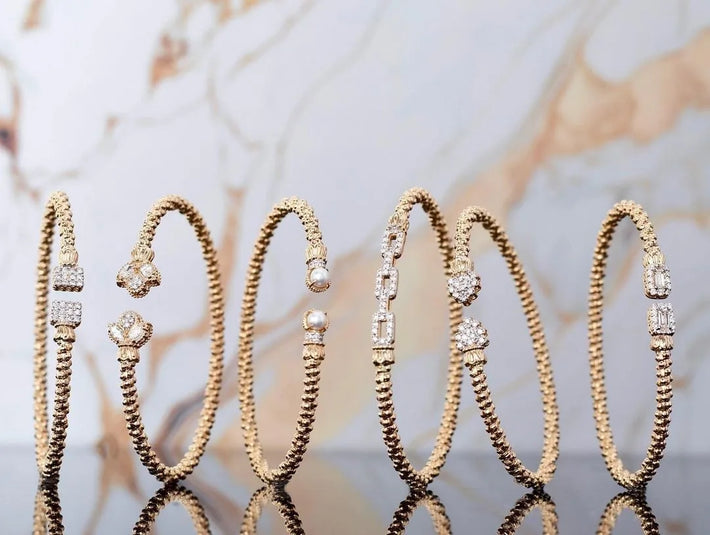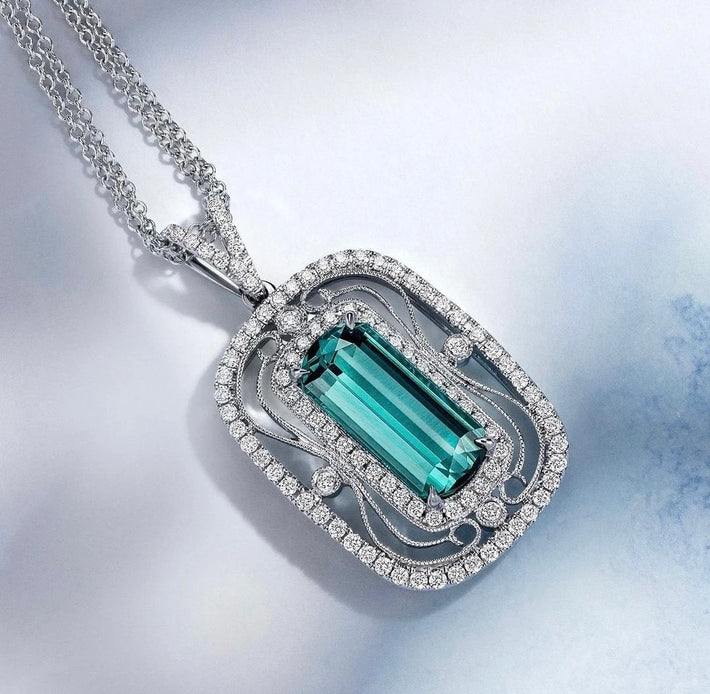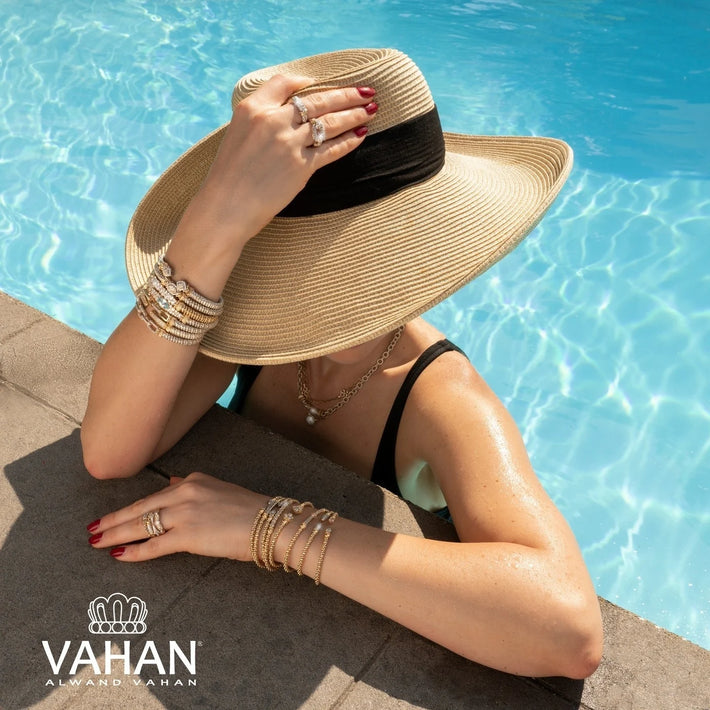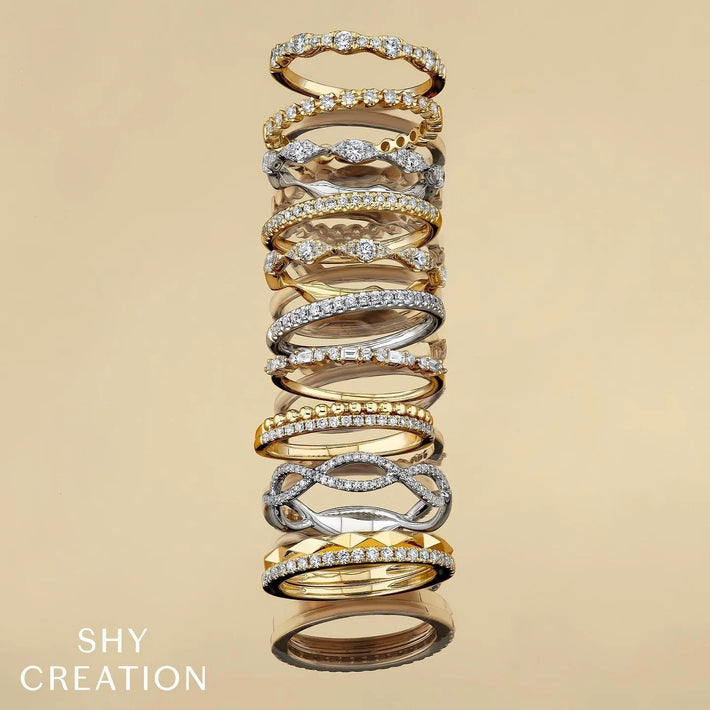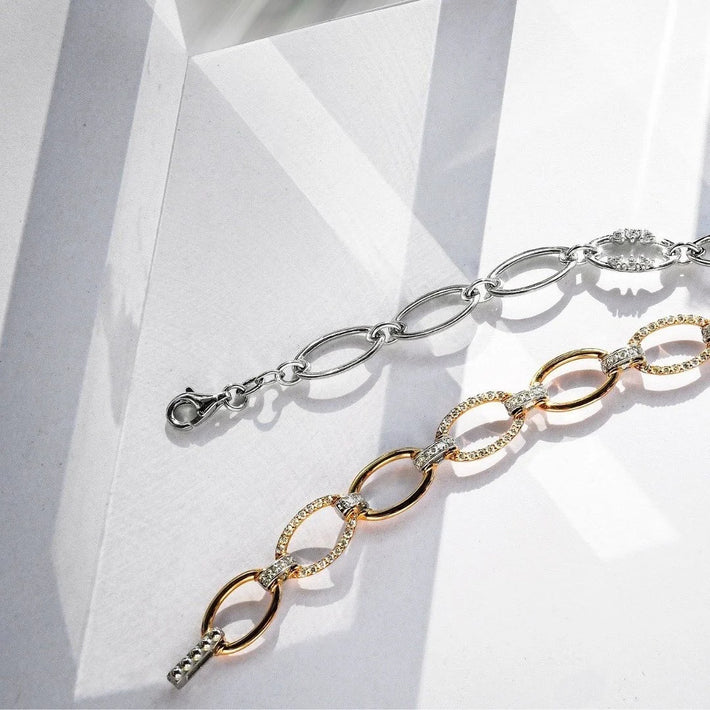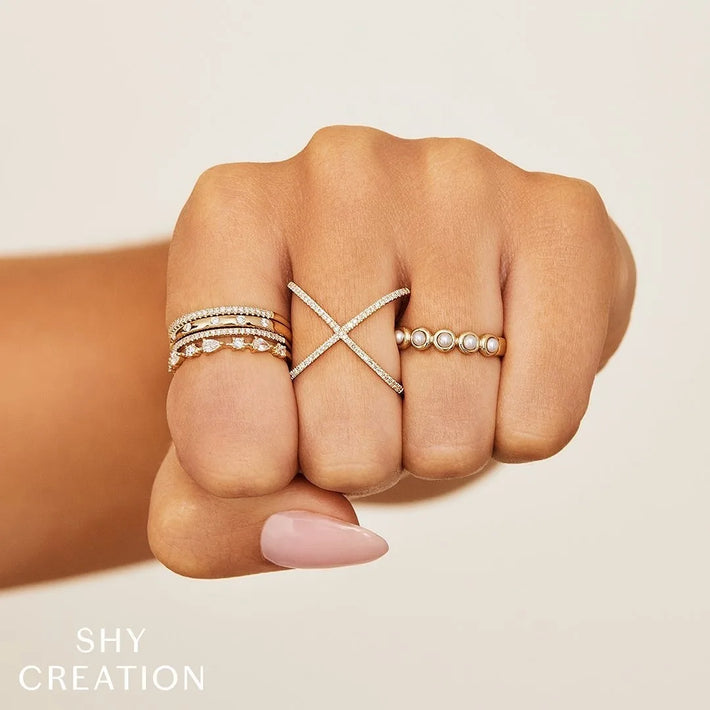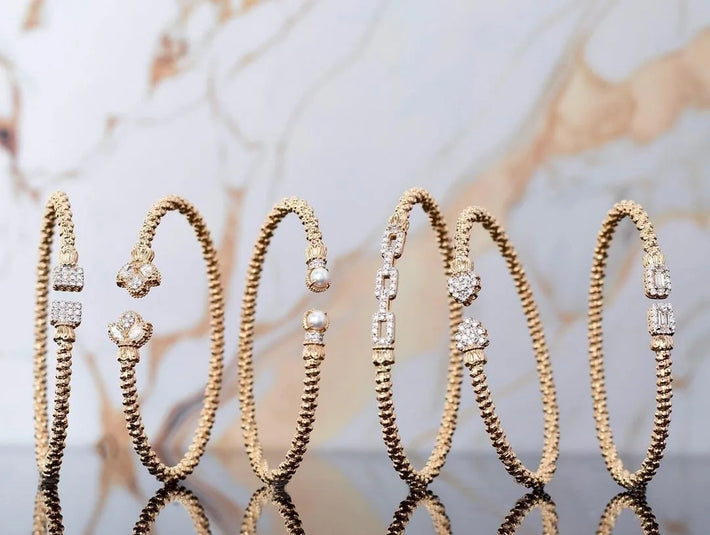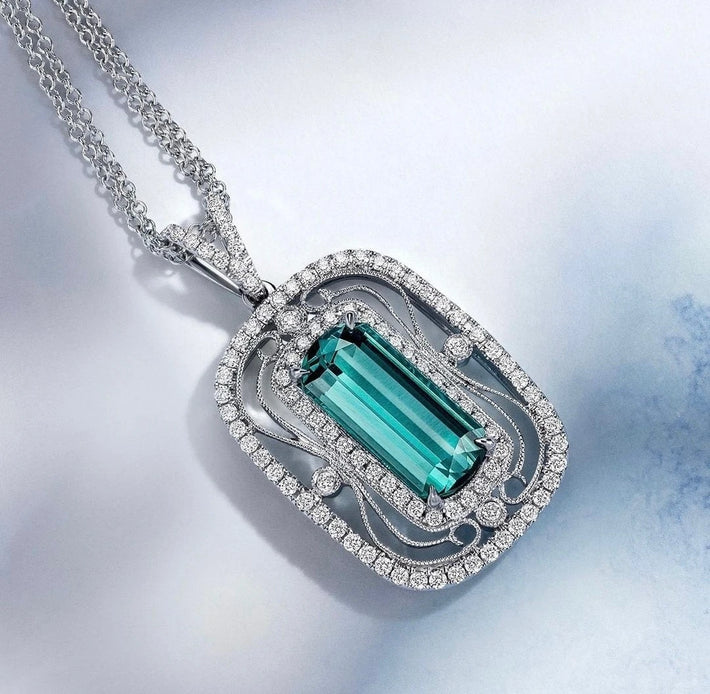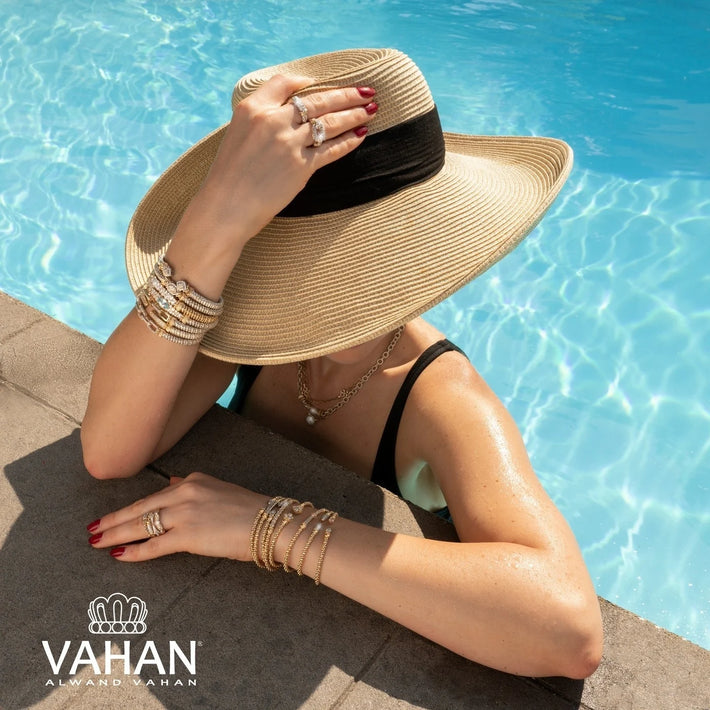The diamond engagement ring has been the preferred choice for brides to be for centuries. What began life as a very plain ring has become a piece of jewelry that can be an incredible and intricate work of art.
There are many more different styles of engagement rings than there are wedding rings. As well as modern style rings, there is also a healthy market of antique rings and vintage rings and if you are unable to find the exact ring you are looking for in this vast array, there's also the option for custom rings.
Naturally, as time has passed the form and design of the engagement ring have changed greatly. The engagement ring hasn't always been a diamond ring! Influencing factors include types of material available, customs, culture and tastes of the time, art and design movements and trends.
Let's delve into how the look and design of the engagement ring has evolved over time.
Ancient Civilizations - A Symbol of Ownership and Marriage
The custom of marriage has been around for many more centuries than the concept of an engagement ring. Unions were celebrated with a ring in Ancient Egypt, Rome and Greece but a ring was not just a symbol of commitment, it was also one of ownership.
Typically, in Egypt and Greece, betrothal rings were made from simple materials like braided reeds. While the Roman Empire flourished, the most common material was iron but yellow gold rings were used as wedding bands by the wealthy.
The design of ancient engagement/wedding rings was plain and simple although there were craftsmen that produced rings with designs and engravings.
Papal Endorsement
Although already accepted as a sign of betrothal, in 850 AD, Pope Nicholas I made them "official! He declared that henceforth the engagement ring would represent a man's intent to marry the woman to whom he would present the ring. Although gold was very precious and very expensive at the time, the pope also stated that the ring must be made of gold. At this time, only yellow gold was available.
While most men could only afford the simplest, plain gold ring, wealthier men were happy to pay for rings with fancy designs.
15th Century - The First Diamond Engagement Ring
As time moved on, more outlandish displays of wealth led to fancy engagement rings that were set with precious gems.
The first recognized diamond wedding ring can be traced to the late 1300s/early 1400s thanks to an inclusion in an English widow's will. There was a further acknowledgment of this practice in a 1475 poem about two Italian socialites which read “Two wills, two hearts, two passions are bonded in one marriage by a diamond”.
The most often quoted example of the first diamond engagement ring came in 1477 although, on evidence of the instances above, it should be called the first famous diamond engagement ring.
Archduke Maximillian of Austria presented such a ring to his future bride, Mary of Burgundy. Not only did this begin the trend of Europe's elite presenting diamond engagement rings but it was also a taste of the artistry that would come to ring design in the following centuries. Mary's ring was not a solitaire diamond but contained a number of small flat diamonds that were set to form the pattern of the letter M.
16th Century - Separate Engagement and Wedding Bands
The Reformation essentially oversaw the separation of the single betrothal ring into the engagement ring and wedding ring.
As things progressed into the 16th century, gimmel rings became popular and the norm for cementing an engagement between a man and a woman. These were made from two or three hoops of various materials that were made to fit together to form a single ring.
After getting engaged, the two partners would each wear a different hoop of the ring, and then during the wedding ceremony, they would be reconnected and the bride would place the full completed ring on her finger. This is the kind of ring that was used by church reformer, Martin Luther on his wedding to Catherine Bora in 1525.
17th and 18th Century - Design Updates
Gimmel rings remained popular throughout the 17th century along with poesy rings that had been introduced in France in the 14th century.
The style of engagement rings moved on as new materials were discovered and new technologies developed enabling more intricate and delicate designs. Rings became statements of art and there would be all kinds of characteristics coming together in very ornate rings.
Diamonds were still very rare so more accessible gemstones like sapphires, emeralds and rubies were more popular in engagement rings. Georgian elite however had a penchant for diamonds and there were some fabulous rings made. Diamond rings in the Georgian period had incredible glitter and sparkle. Rose-cut diamonds were the popular choice for engagement rings, usually combined with elaborately engraved shanks.
Historians lay the invention of the halo engagement ring in the early Georgian period.
19th Century - Victorian Diamonds
With diamonds still being so scarce, rings in the early part of the 19th century continued to use colored gemstones as well as fanciful features like flowers, enamel, snakes and buckles. Paste stones were a common feature.
Even Queen Victoria was not presented with a diamond engagement ring. Albert's ring to her was an emerald and ruby coiled serpent ring.
One of the major milestones in the history of diamond engagement rings happened in 1866 when diamonds were discovered in South Africa. The proliferation of diamond mines made the stone more accessible and by the end of the 19th century, the most popular Victorian style was the solitaire diamond engagement ring.
The end of the 19th century also saw the first of the art movements that influenced jewelry design. Art Nouveau rings reflected the organic and flowing designs influenced by nature. As well as the ubiquitous diamond, engagement rings would feature motifs like scrolling, ribbons, flowers, vines and leaves.
20th Century - Art Periods and Trends
It was in the Edwardian era (1901 to 1910), that the popularity of the diamond engagement ring as we know it really started to take off.
Art Nouveau and Edwardian Period
Larger diamonds were still beyond the means of many so jewelers would make up for this by using a cluster of smaller diamonds in settings made of filigree, with ornate detailing resembling things like lace to add a visual flare.
During this time, the most popular stone for engagement rings was the sapphire. When diamonds were used it was the old European cut diamond, which was a hand-cut round stone. This remained popular until the 1930s.
Also in the Edwardian period, platinum emerged as an alternative to yellow gold.
1920s and Art Deco
The 1920s heralded a new wave of modern fashion and art, replacing the more intricate designs of the Edwardian era.
White gold had been invented at the end of the 19th century but didn't become commercially available until 1912 and by the '20s, it was an alternative to the more expensive platinum. Engagement rings began to be made in white gold and also in rose gold. Rose gold - previously known as Russian gold - was particularly popular in the US in the 1920s.
Art Deco (roughly 1919 to 1939) is the era in which we start to see combinations of diamonds and different colored gemstones, as well as angled lines.
The use of geometrical shapes in Art Deco engagement rings was no better expressed than by the Asscher cut diamond. Even though Joseph Asscher premiered his cut in 1902, it was the Art Deco movement that truly embraced it.
Art Deco engagement rings were bold and daring, even outlandish. They featured a combination of diamonds and colored gemstones mostly in the cuts that were the most angular.
1930s
As the Great Depression hit in the 1930s, most people had to opt for less extravagant and expensive rings so simple designs became the most popular. According to market research, before the advent of World War II, only 10 percent of US engagement rings contained a diamond.
Significantly, the financial crisis also saw a collapse in the price of diamonds. De Beers responded by the end of the decade with a heavy-hitting marketing campaign that would run for nearly 10 years.
1940s
Thanks to the war, fashion in the 1940s became all about doing more with less, and this included engagement rings. Jewelers used materials to create intricate designs like flowers, leaves, hearts and bows that were incorporated to make cheaper materials look more expensive and elegant.
Yellow gold once again emerged as the most common precious metal for rings and for those who could afford it, cushion cut and solitaire center stones were the main choices.
the last push of De Beers marketing campaign came in 1947 when they launched their iconic 'a diamond is forever' slogan. This was to convince all couples that diamond rings were the true symbol of an everlasting marriage but also cemented the ideals of diamonds in our psyche.
1950s
This campaign proved to be incredibly successful, and by the 1950s, diamond engagement ring sales were higher than they had ever been and became the traditional norm. One of the most popular styles during the early post-war period was a beautiful solitaire diamond with diamond baguette stones on each side.
1970s
It was the 1970s when people started to take more of a customized and personalized approach to engagement rings. It started to become common for couples for wear matching wedding sets, with equal focus being put on what the groom was going to wear as well as the bride.
1980s
One particular cultural moment in engagement ring history is the ring that Princess Diana was given upon her betrothal to Prince Charles. A sapphire ring with diamond clusters, it sparked a huge swell in popularity in this particular style, and not long after the photographs of Diana hit the papers, the popularity of colored stones was restored to its 1920s heyday.Ttoday, Princess Diana's ring has passed to Katherine, Princess of Wales, ensuring its enduring position in the hallowed realms of engagement ring design.
21st Century
Moving into the 21st century, the biggest trend of the new millennium so far has definitely been halo rings. This is a style that features a cushion cut or radiant cut stone that is surrounded by a 'halo' of smaller diamonds that add a wonderful extra dose of sparkle. (A halo ring may be a combination of any gemstones although diamonds and sapphires make up the most popular styles.)
Since 2020 or so, the big trend has been a large oval-shaped solitaire stone on a thin band, either plain or pave set. A simple band like this enables the diamond to stand out, especially if the diamond in question is up in the sensational 6 to 8-carat range!
the biggest thing about engagement ring design in the 21st century is that anything goes. With a massive price range and an ever-widening array of styles and designs, there is a perfect ring for every bride-to-be. Moyen and Co offers a collection of classic styles and modern engagement rings featuring stunning diamonds in a wide range of shapes.
